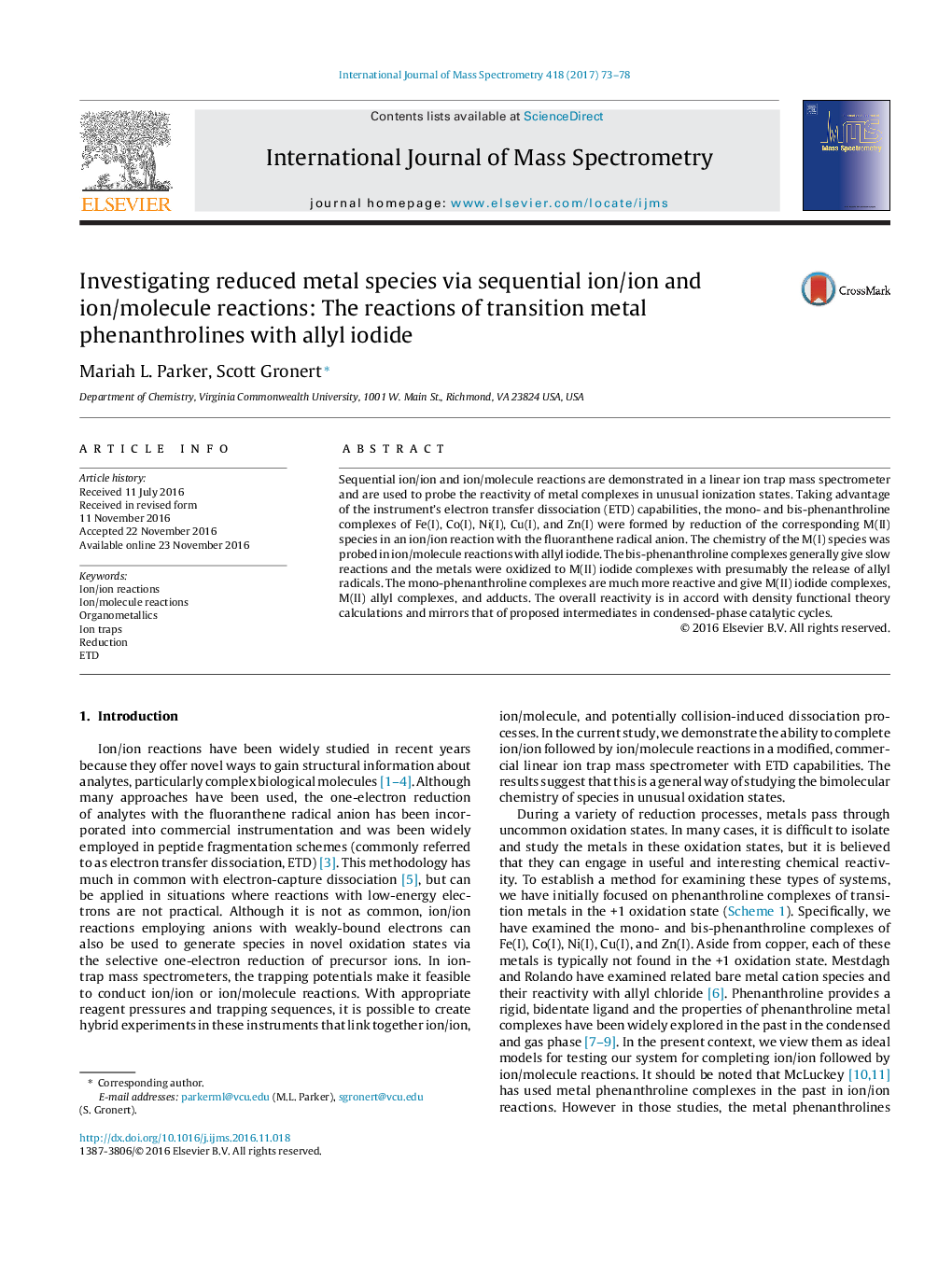| Article ID | Journal | Published Year | Pages | File Type |
|---|---|---|---|---|
| 5134218 | International Journal of Mass Spectrometry | 2017 | 6 Pages |
â¢ETD is used to complete selective gas-phase reductions of metal complexes.â¢The reduction products are probed in subsequent ion/molecule reactions.â¢The reactivity parallels that of known condensed-phase reactive intermediates.
Sequential ion/ion and ion/molecule reactions are demonstrated in a linear ion trap mass spectrometer and are used to probe the reactivity of metal complexes in unusual ionization states. Taking advantage of the instrument's electron transfer dissociation (ETD) capabilities, the mono- and bis-phenanthroline complexes of Fe(I), Co(I), Ni(I), Cu(I), and Zn(I) were formed by reduction of the corresponding M(II) species in an ion/ion reaction with the fluoranthene radical anion. The chemistry of the M(I) species was probed in ion/molecule reactions with allyl iodide. The bis-phenanthroline complexes generally give slow reactions and the metals were oxidized to M(II) iodide complexes with presumably the release of allyl radicals. The mono-phenanthroline complexes are much more reactive and give M(II) iodide complexes, M(II) allyl complexes, and adducts. The overall reactivity is in accord with density functional theory calculations and mirrors that of proposed intermediates in condensed-phase catalytic cycles.
Graphical abstractDownload high-res image (129KB)Download full-size image
